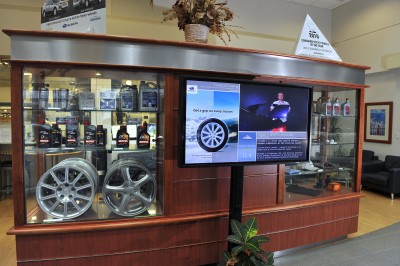Funding digital signage networks through out-of-home (OOH) advertising has proven a viable business model, but only when those networks are properly designed for this purpose, according to a recent industry webinar.
Lyle Bunn, a digital signage industry analyst based in Brighton, Ont., hosted the webinar on December 12, 2012, and was joined by two speakers: Andy McRae, general manager (GM) of Toronto-based Dot2Dot Communications, which provides ad management software for digital signage networks; and Dan Trapani, national accounts manager for NEC Display Solutions’ Vukunet ad management platform.
McRae has transitioned Dot2Dot from its previous incarnation as the Canadian office for digital signage content software provider Scala, while Trapani worked in the past with Captivate Network, Adcentricity and ClearChannel Outdoor.
Both speakers emphasized how digital out-of-home (DOOH) advertising has grown around the world and across a wide range of location types, including airports, shopping malls, restaurants, bars, health clubs, doctors’ offices and car dealerships (example pictured)—yet many early digital signage networks failed, since they lacked a well-defined strategy to attract outside advertising revenue.
“Ad management can be a tool or a function for scheduling content based on your advertisers’ criteria,” said McRae, “but you need to define your network objectives, audience and potential advertisers before going to market. In retail, for example, advertisers could include the store’s vendors, as well as credit card companies. It’s important to keep it simple and match the system to the business.”
“There has been solid growth in spending, but it hasn’t been broad-based,” added Trapani. “It has focused on specific markets. The top 15 networks in North America get the majority of the business.”
To achieve broader-based success throughout the industry, Trapani explained it will need to become easier to buy and sell digital signage as an ad medium.
“The challenge for ad buyers is there are many vendors with different offerings,” he said. “They use data in different formats, so there is inconsistency, and network reliability has been lacking. There needs to be more trust established between ad agencies and network operators.”
Looking back at the early days of digital signage, McRae said there used to be an ‘if you build it, they will come’ syndrome, but this proved to be faulty reasoning.
“In the media industry, it’s never easy to move ad dollars into a new medium,” he said. “You need research to be able to match up your network and your audience to the right advertisers. And then you have to deliver proof-of-play and proof-of-performance data.”
Trapani cited the example of gas stations where screens display ads for such products as mobile telephones, driver’s insurance and convenience store snacks, so the content is relevant to customers; and where the screen positions guarantee content playback to the entire potential audience.
“You need to be realistic,” he said.






